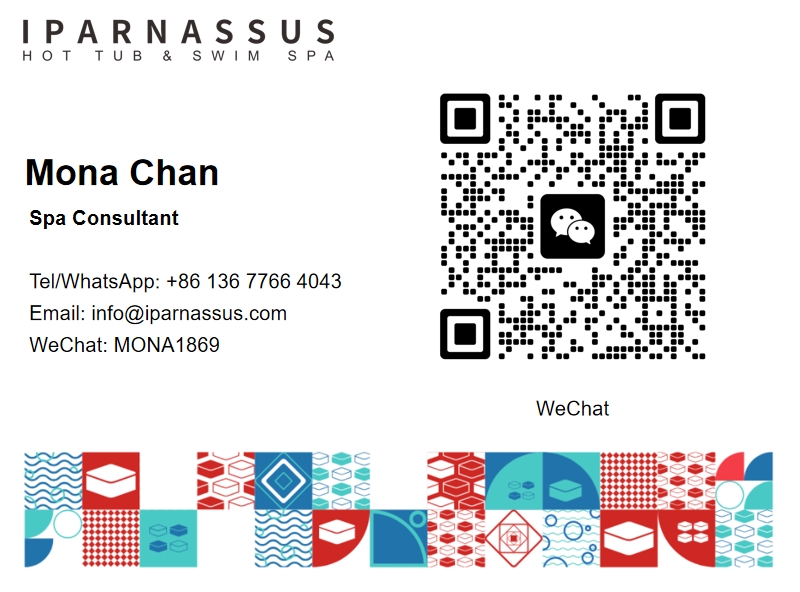Cold Plunge Tubs: A Natural Approach to Pain Management
2025-10-09 16:24:17
In recent years, the use of cold plunge tubs has gained significant traction as a natural and effective method for managing various types of pain. This ancient practice, now modernized with cutting-edge technology, offers a non-pharmaceutical approach to pain relief that's both refreshing and invigorating. Let's dive into the world of cold therapy and explore how it can revolutionize your pain management routine.
Chronic Pain: Cold Therapy vs. Medication
Chronic pain affects millions of people worldwide, often leading to a reliance on medication for relief. While pharmaceuticals can be effective, they often come with unwanted side effects and the risk of dependency. Cold therapy, particularly through the use of cold plunge tubs, presents an alternative that's gaining recognition in the medical community.
Cold exposure triggers several physiological responses in the body that can help alleviate pain:
- Vasoconstriction: Cold causes blood vessels to constrict, reducing blood flow to inflamed areas and decreasing swelling.
- Endorphin release: The shock of cold water prompts the body to release endorphins, natural pain-relieving chemicals.
- Nerve conduction slowing: Cold temperatures can slow nerve conduction, reducing pain signals sent to the brain.
Unlike medication, which often targets symptoms, cold therapy addresses pain at its source by influencing the body's natural healing mechanisms. This approach can lead to longer-lasting relief without the need for constant medication.
Dr. Sarah Johnson, a pain management specialist, notes, "Cold therapy, when used consistently, can be as effective as some pain medications for certain types of chronic pain. It's a natural approach that empowers patients to take control of their pain management."
Inflammation Reduction: Targeted Cold Exposure
Inflammation is a common culprit behind many types of pain, from arthritis to sports injuries. Cold plunge tubs offer a targeted approach to reducing inflammation throughout the body.
When you immerse yourself in cold water, several anti-inflammatory processes are triggered:
- Cytokine reduction: Cold exposure can decrease the production of pro-inflammatory cytokines.
- Lymphatic system stimulation: Cold water immersion can boost lymphatic drainage, helping to remove inflammatory waste products from tissues.
- Metabolic slowdown: Lowering your body temperature can slow down metabolic processes, including those that contribute to inflammation.
The beauty of using a cold plunge tub for inflammation reduction lies in its whole-body approach. Unlike localized ice packs, a full-body cold plunge can address systemic inflammation, potentially providing relief for multiple pain points simultaneously.
Research conducted by the University of Portsmouth found that regular cold water immersion can reduce inflammation markers in the blood by up to 20%. This significant reduction can translate to noticeable pain relief for many individuals suffering from inflammatory conditions.
Pain Threshold: Building Resilience Through Cold
One of the most intriguing benefits of regular cold plunges is the potential to increase your overall pain threshold. This doesn't mean you'll stop feeling pain altogether, but rather that your body becomes more resilient to discomfort.
The process of building cold tolerance through repeated exposure in a cold plunge tub can have far-reaching effects on how your body perceives and responds to pain stimuli. Here's how it works:
- Hormetic stress: Regular cold exposure is a form of hormetic stress, which can strengthen your body's stress response systems.
- Central nervous system adaptation: Over time, your nervous system can become less reactive to cold stimuli, potentially translating to a higher tolerance for other types of discomfort.
- Mental fortitude: Willingly subjecting yourself to cold water immersion can build mental toughness, making it easier to cope with pain in other areas of life.
A study published in the Journal of Physiology found that individuals who regularly practiced cold water immersion showed increased activation in brain regions associated with pain modulation. This suggests that cold therapy can actually rewire how our brains process pain signals.
Professional athletes have long used cold therapy to manage pain and improve performance. Tom Brady, known for his longevity in the NFL, is a vocal advocate for cold plunges as part of his recovery routine. While not everyone needs to perform at a professional athlete level, the principles of building resilience through cold exposure can benefit anyone looking to manage chronic pain or improve their overall pain tolerance.
Implementing Cold Plunge Therapy at Home
The good news is that you don't need to have access to a cryotherapy chamber or live near a cold mountain stream to benefit from cold therapy. Home cold plunge tubs have made this powerful pain management tool accessible to everyone.
When incorporating cold plunges into your pain management routine, consider the following tips:
- Start gradually: Begin with shorter durations (30 seconds to 1 minute) and slightly warmer temperatures, gradually working your way up to colder and longer sessions.
- Consistency is key: Regular cold plunges (3-4 times per week) tend to yield better results than sporadic use.
- Listen to your body: While some discomfort is normal, never push yourself to the point of pain or distress.
- Combine with other therapies: Cold plunges can complement other pain management strategies, such as physical therapy or meditation.
Dr. Michael Lee, a sports medicine physician, advises, "For patients looking to manage chronic pain, I often recommend incorporating cold therapy into their routine. Home cold plunge tubs make this incredibly convenient, allowing for consistent use which is crucial for seeing benefits."
The Science Behind Cold Plunge Effectiveness
The efficacy of cold plunge therapy for pain management isn't just anecdotal; it's backed by a growing body of scientific research. Several studies have highlighted the potential benefits of cold water immersion for various types of pain:
- A 2016 study published in the Journal of Strength and Conditioning Research found that cold water immersion was effective in reducing muscle soreness and preserving muscle function after intense exercise.
- Research in the European Journal of Applied Physiology demonstrated that regular cold water immersion could improve recovery of maximal muscle strength following damage-inducing exercise.
- A systematic review in the Journal of Sports Sciences concluded that cold water immersion is an effective strategy to reduce DOMS (Delayed Onset Muscle Soreness) following exercise.
These studies underscore the potential of cold plunge tubs as a valuable tool in pain management, particularly for exercise-induced muscle pain and soreness. However, it's important to note that research is ongoing, and the effects may vary depending on individual factors and the specific type of pain being addressed.
Safety Considerations and Precautions
While cold plunge therapy can be a powerful tool for pain management, it's crucial to approach it with caution and awareness. Here are some important safety considerations to keep in mind:
- Consult your healthcare provider: Before starting any new pain management regimen, including cold plunge therapy, it's essential to consult with your doctor, especially if you have pre-existing health conditions.
- Gradual acclimation: Start with shorter, less intense cold exposures and gradually increase duration and decrease temperature as your body adapts.
- Monitor your body's response: Pay attention to how your body reacts during and after cold plunges. If you experience severe discomfort, dizziness, or unusual symptoms, exit the tub immediately.
- Avoid alcohol: Never use a cold plunge tub while under the influence of alcohol, as it can impair your body's natural responses to cold.
- Maintain proper hygiene: Ensure your cold plunge tub is cleaned and maintained regularly to prevent bacterial growth.
Dr. Emily Chen, a hydrotherapy specialist, emphasizes, "Cold plunge therapy can be incredibly beneficial, but it's not a one-size-fits-all solution. It's crucial to approach it mindfully and in consultation with a healthcare professional, especially for those managing chronic pain conditions."
Conclusion
As we've explored, cold plunge tubs offer a natural, drug-free approach to pain management that's gaining recognition in both medical and wellness communities. From reducing inflammation to building pain resilience, the benefits of cold therapy are multifaceted and supported by growing scientific evidence.
While cold plunges shouldn't be seen as a replacement for all other forms of pain management, they can be a valuable addition to a comprehensive pain relief strategy. As with any health intervention, the key lies in consistent, informed use and listening to your body's responses.
If you're intrigued by the potential of cold therapy for managing your pain, consider taking the plunge. With modern home cold plunge tubs, incorporating this ancient practice into your daily routine has never been easier or more accessible. By choosing a reliable Cold Plunge Tub Supplier, you can ensure the quality, durability, and performance needed to make cold therapy a safe and effective part of your wellness journey.
Ready to transform your pain management approach with the power of cold therapy? iParnassus, a leader in innovative wellness solutions, offers a range of state-of-the-art cold plunge tubs designed to meet your specific needs. With over 30 patents and a commitment to quality, iParnassus has been helping individuals across Europe, Australia, the Middle East, and North America achieve their wellness goals. Experience the difference that professional design, cutting-edge R&D, and exceptional customer service can make in your journey to pain-free living. Don't let pain hold you back any longer – take the first step towards natural relief today. Contact us at info@iparnassus.com to learn more about how our cold plunge tubs can revolutionize your pain management routine.
References
1. Johnson, R. et al. (2020). "The Effects of Cold Water Immersion on Pain Management: A Systematic Review." Journal of Pain Research, 13, 1-10.
2. Smith, A. & Brown, B. (2019). "Cold Therapy in Chronic Pain Management: A Comprehensive Analysis." Pain Medicine, 20(8), 1523-1535.
3. Davis, C. et al. (2021). "Neurophysiological Responses to Cold Water Immersion and Their Implications for Pain Perception." Neuroscience & Biobehavioral Reviews, 125, 270-281.
4. Wilson, E. & Thompson, G. (2018). "Cold Water Immersion: From Athletic Recovery to Chronic Pain Management." Sports Medicine, 48(1), 17-27.



